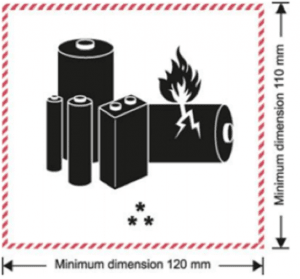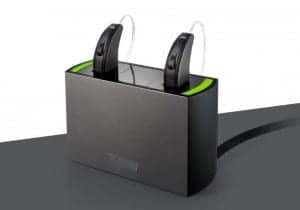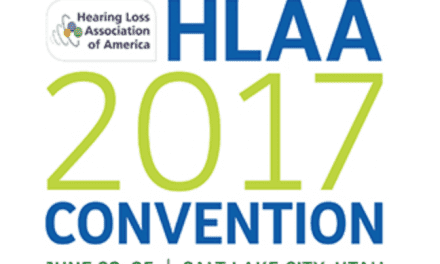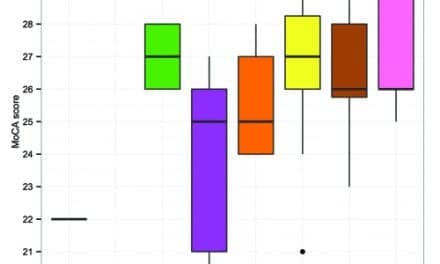About Our Expert…
Barry Freeman, PhD, is vice president of hearing and audiology for ZPower, and has been leader and educator in the global audiology community for over 35 years. Prior to joining ZPower, he was CEO and president of Audiology Consultants Inc (ACI), a private audiology consulting firm, and senior director of Audiology and Education for Starkey Hearing Technologies, a global manufacturer of hearing aids. Dr Freeman has served as chair and professor of Audiology at Nova Southeastern University (NSU) and has taught full time or as an adjunct professor in some of the most distinguished audiology programs in the country. Additionally, he owned and practiced for 20 years at the Center for Audiology in Clarksville, Tenn, and Hearing Services of Kentucky in Hopkinsville, Ky. He is a past president of the American Academy of Audiology (AAA), served on the AAA Board of Directors for 6 years, and continues to serve on several professional boards.
Q & As: This Week’s Top Selections
Q: I’ve heard there are shipping restrictions for rechargeable batteries and products that use rechargeable batteries. Do the restrictions apply to hearing aids and accessories that use rechargeable batteries?
A: The answer to this question depends on the type of rechargeable battery used in the hearing aids and their accessories. Two rechargeable battery options are currently widely available for hearing aids—silver-zinc and lithium-ion. ZPower silver-zinc rechargeable batteries use a water-based chemistry that is stable, non-flammable, and nontoxic and, therefore, are classified by the US Department of Transportation as Class 8, Non-Hazardous for shipping and handling with no restrictions.
Lithium-ion rechargeable batteries are classified as Hazardous, with multiple requirements and restrictions on packaging, shipping, and handling. The International Air Transport Association (IATA) has developed guidance for shippers, freight forwarders, ground handlers, airlines, and passengers.
If a package contains more than two products with an installed lithium-ion battery like hearing aids or accessories (eg, streamers) in the same package than a shipping label (Figure 1) and statement on the shipping waybill are required. The Air Waybill is required to contain the statements “Lithium [ion or metal] batteries in compliance with Section II of PI9XX” when the lithium battery mark is affixed to the package.

Figure 1. Lithium shipping label must be affixed to packages (IATA Lithium Battery Guidance Document – 2017 APCS/Cargo, Page 13, 12/15/2016).
When a device powered by lithium-ion batteries is not working due to battery problems and is returned for repair, the device only can be shipped by ground transportation. The challenge for audiologists and dispensers, of course, is determining whether the cause of a nonfunctioning device like a hearing aid or accessory is a defective lithium-ion battery which is sealed in the case or, perhaps, a different factor. These shipping and labeling requirements only apply to products powered by lithium-ion batteries and do not apply to silver-zinc or zinc-air batteries.
As hearing technology transitions from disposable zinc-air batteries to hearing aids powered by rechargeable batteries, providers and consumers must be aware of the unique considerations associated with the management of these batteries and the products they power.
Previous Q & A’s
Q: How do I know how long the battery will last in the hearing aid?
A: Consider the questions you may ask when buying a new car. How many miles can I travel on a single tank of gas? It’s a similar response to your question: It depends! What is the capacity of your gas tank, what are your driving habits (city or highway), how many miles per gallon does your car get?

How long a hearing aid battery will last depends on hearing aid battery capacity along with how the hearing aid is used, utilization of wireless features, and many other factors. Image: © Xetra | Dreamstime.com
Hearing aid battery life is similar and depends on the capacity of the battery and the current drain or performance of the hearing aid in different listening environments. So, to help you answer the question for your hearing aids, you should determine: How many hours per day do you wear your hearing aid? How many of those hours are you streaming through the hearing aid while talking on the phone, or listening to music, or watching TV or a movie?
Not all hearing aids are the same. The ZPower 312 silver-zinc batteries all have the same effective capacity of 37 mAh, but hearing aids can drain the battery at different rates and can be impacted by the way you use the hearing aids. Hearing aids are not all the same and battery life not only can vary among manufacturers, but even across the ears, depending on your hearing loss and the way the hearing aids are programmed. Talk to your professional about these factors and they should be able to counsel you about battery life.
Q: Do I need to clean the charging contacts on my hearing aids and charger?
A: Yes. To ensure your hearing aids charge properly, it is important that the hearing aids and charger are dry and clean before charging. Use a soft tissue to remove moisture or debris on the hearing aids and charger contacts. The soft brush that is included with hearing aids may also be used to remove debris from the charging wells. Do not use rubbing alcohol or other chemical substances.
Q: With the summer heat, I was wondering how temperature and/or humidity affects battery life in both rechargeable and zinc-air hearing aid batteries?
A: The temperature effect is similar for both types of batteries. At higher temperatures, the internal impedance of the cells is reduced. This means that while in use, the batteries will last a little longer and deliver a little more capacity. However, this also means that during non-use (storage) the self-discharge of the batteries will also be increased. Therefore, they both may not deliver their full rated capacity. But in the case of silver zinc, recharging the battery will put the correct amount of capacity back into the battery. Since zinc-air cells are single-use primary cells, any self discharge is lost for good and not recoverable.
With regard to humidity, the performance of either battery is not affected by humidity. However, if there is moisture on the lid of the zinc-air battery, it could block the airholes on the battery and prevent the hearing aid from receiving power. This is not an issue for the silver-zinc rechargeable battery since it does not have airholes.
Q: I use a hearing aid app to track the battery life of my disposable batteries. Can I use the same app to track the battery life of ZPower rechargeable batteries?
A: No, the apps provided by the hearing aid manufacturers do not accurately track the battery life of ZPower rechargeable batteries. The apps were designed to predict the battery life of disposable zinc-air batteries. However, the app will still show a battery life estimate; you should ignore this estimate as it is not accurate. At this time, there are no apps to measure the battery life of a silver-zinc battery.
Q: It seems like a lot of hearing aids are now using the ZPower rechargeable battery system. What’s the actual number of hearing aids now using it? Any estimates on how many new hearing aids sold are rechargeable (ZPower and others combined)?
A: ZPower has had great success in the past 12-18 months. In 2016, we launched a single product, but in 2017, we added an additional 8 hearing aid models that are compatible with the ZPower Rechargeable System. In 2018, we anticipate compatibility with an additional 9 new hearing aid models.
There are not any “official” statistics regarding rechargeable hearing aids, although the Hearing Industries Association (HIA) plans to add “rechargeable” as a new category in 2018 to their hearing aid unit volume data. In 2016, the VA began offering specific models of rechargeable hearing aids, and in 2018 the VA is expanding their offerings of rechargeable products. So, combined with the commercial market sales, this is definitely a fast-growing market segment and not just a smaller “consumer niche.”

This fact sheet was created to help consumers and hearing care professionals get the most out of their rechargeable batteries.
Q: We’ve had a couple situations where it appears the rechargeable batteries are not lasting a full day after charging. Is this a problem with the batteries, the hearing aids, or the user?
A: This is, in fact, not a new problem in the industry. Batteries tend to be the first item blamed when a hearing aid stops working. Before rechargeable batteries, disposable zinc-air batteries often were blamed when hearing aids didn’t run a full day. When that happened, the battery was thrown away and a new one was put in the hearing aid. It was common for manufacturers and hearing care professionals to give away a supply of these batteries with the hearing aids. Now, however, when this happens with the rechargeable battery, it becomes a more complex issue and requires an evaluation of the hearing aids, the rechargeable system, and habits of the user. We have been working to educate the professional channels and consumers regarding “best practices” for using rechargeable hearing aids through articles, instructions, and columns like this one. ZPower has created a fact sheet that describes how consumers can get the most out of their rechargeable hearing aid batteries, and it is can be accessed here: https://zpowerhearing.com/wp-content/uploads/2017/12/Battery_Best_Practices_Flyer.pdf
Q: So, what types of things can the user do to ensure they get a full day out of a silver-zinc rechargeable hearing aid battery?
A: A characteristic of silver-zinc batteries is that, if given the opportunity, the battery will recharge to original full capacity, and it is capable of doing this for at least one year.
Ask Your Question!
Send your questions to [email protected] or via the comment box below.
However, we have begun to recognize that many users treat silver-zinc batteries as if they perform and can be managed like disposable zinc-air batteries. Unfortunately, this is not true. In fact, some of the more traditional ways zinc-air batteries have been managed can have negative effects on the performance of rechargeable silver-zinc batteries. This is one reason why ZPower has created a new set of FAQs and Counseling suggestions available at our website.
Examples include:
- Charge the hearing aids every night. Never try to get more than one day out of a single charge.
- Charge your batteries when you’re not using your hearing aid. If you remove your hearing aids during the day (ie, to take a shower, go swimming, etc), put the hearing aids back on the charger. A good rule of thumb to go by is: If the hearing aids are not on your ears, they should be in the charger. The batteries will not overcharge, and storing them in the charger will not decrease the overall lifespan of the battery. If the charger is not available, it’s OK to open the battery door for a few hours until you either need to wear your aids again or you can place them on the charger.
- When the hearing aids are in the charger, always leave the charger plugged in with power. When the charger does not have power, the hearing aids will turn on and begin to drain the battery.
- Only use an approved active drying system. If the drying system is not approved, then remove the batteries from the hearing aids before placing the aids in the drying system. Unapproved active drying systems may have temperature ranges that exceed the recommended rechargeable battery operating temperature. This could cause the silver-zinc rechargeable battery to over-discharge and may damage the battery.
Much like a car’s mileage range depends on its gas tank and the owner’s driving habits, the battery life of a hearing aid depends on the capacity of the battery, and the listening enviroments and use of the various hearing aid functions.

Much like a car’s mileage range depends on its gas tank and the owner’s driving habits, the battery life of a hearing aid depends on the capacity of the battery, and the listening enviroments and use of the various hearing aid functions.
Q: How long should the battery last after a full charge? How much does Bluetooth activity affect this? —Brent Spehar
A: This is a great and very important question. Battery life is dependent on several factors including the amount of capacity of the battery, how fast the hearing aid drains the current, and the wear behaviors and habits of the user.
Much like how a car’s mileage range depends on its gas tank, the driving conditions, and the owner’s driving habits, a hearing aid’s battery life depends on the capacity of the battery, the wearer’s listening environments, and use of the various hearing aid functions, including audio streaming.
I like to use the example of an automobile. How many gallons of gas does the fuel tank hold or, for hearing aid batteries, how many mAh capacity is in the battery? How many miles per gallon does the car use or how many mA does the battery drain both when streaming and not streaming? And, finally, is the car driven on the highway or in the city and is the air conditioner on or off? Or, for hearing aids, how many hours per day does the hearing aid stream? Does the hearing aid use 2.4 GHz streaming or does it is use NFMI with an intermediate device that has its own battery? And, what features are turned on or off on the hearing aid?
Once you answer these questions, you can figure out “how long the battery will last after a full charge.” I gave some example calculations in the HR article: The Changing Landscape of Hearing Aid Batteries (Hearing Review, October 31, 2017).
Please note a factor we have learned in our electronics’ lab. Not all hearing aids are the same. Some 2.4 GHz products have current drains averaging 4.8-5.0 mA when streaming while other 2.4 GHz products using lower power Bluetooth will drain the battery at 3.0-3.4 mA while streaming. Some 2.4 GHz products when not streaming may have battery drains of 1.8-2.0 mA, while some of the newer products with bilateral beamforming may drain the battery at 2.3-2.5 mA when not streaming.
The key is to know your products and know your patient’s listening habits. This is critical to good counseling.
Q: Is the life of the hearing aid circuit reduced as a result of using the rechargeable system? It did happen when [previous models of hearing aids] were rechargeable. —Anjan Muhury
A: The ZPower Rechargeable System has been thoroughly evaluated by the hearing aid manufacturers and there is no indication that the system will have a negative effect on the life of the hearing aid circuit. The ZPower silver-zinc battery is designed to mimic the performance of traditional zinc-air batteries and is transparent to the DSP of the hearing aids. Extensive studies of hearing aids using the ZPower System also show the system including the ZPower silver-zinc batteries have no impact on the electrophysiologic performance of the hearing aids. Therefore, the ZPower System will not have a negative impact on the hearing aid circuitry or performance.
Q: What’s a realistic time frame for a rechargeable hearing aid battery to last?
A: Rechargeable silver-zinc batteries last about a year. They are removable and, therefore, easily replaced. It is recommended that rechargeable silver-zinc batteries are replaced once a year by a hearing care professional.
Q: What would happen if my patient accidentally places their hearing aids in the charger while they have zinc air batteries in them?
A: When the hearing aids are put on the charger, the charger will check to see what type of battery is in the hearing aid. If the charger detects a disposable zinc-air battery, the lights on the charger will turn red. If the charger detects a silver-zinc battery, the lights on the charger will start blinking green; once the battery is fully charged, the lights will turn solid green.
Q: Can my patients overcharge a ZPower battery if they leave it in the charger for too long?
A: The batteries will not overcharge if left in the charger. It is a best practice to put the hearing aids back on the charger when the hearing aids are not being worn during the day. This will keep the hearing aids turned off and the batteries charged. For long-term storage, if batteries will not be used for over 2 weeks, the rechargeable batteries should be removed from the hearing aids and stored in a location where they will not touch each other or other metal objects.
Q: What happens when the silver-zinc rechargeable battery is getting low on power?
A: The hearing aid wearer will hear the low battery warning. Once the low-battery warning occurs or once a hearing aid shuts off due to a low battery condition, the battery door should not be opened and closed to reboot the hearing aid. Rebooting after the low battery warning can override the smart circuitry in the battery door into believing it has a traditional disposable battery installed and, although the hearing aid will continue to work for a short period, it may over-discharge the battery. If a low-battery warning from the hearing aids is received, the hearing aids should be placed in the charging base for charging or the batteries should be replaced with non-rechargeable batteries. The rechargeable batteries should not be stored with metal objects such as keys or coins.
Ask YOUR Question
Send your questions to [email protected] or via the comment box below.
For more information about ZPower, visit: https://zpowerbattery.com







